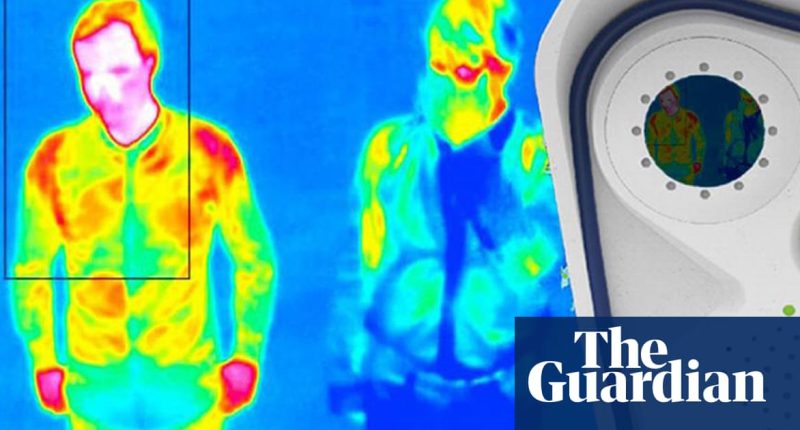Share this @internewscast.com
Prof Emma Thomson is someone who knows a thing or two about pandemics. As the recently appointed director of the Medical Research Council, University of Glasgow Centre for Virus Research (CVR) and a World Heath Organization consultant, Thomson is one of the country’s leading virus experts.
“We used to think that pandemics would occur maybe once in our lifetimes. Now, it’s definitely within the next few years. It could even be tomorrow,” she says.
But, Thomson says, “amazing” advances in technology, including genetic sequencing, mRNA vaccines and artificial intelligence (AI), are boosting the world’s ability to deal with these threats, even as travel, urbanisation and the changing climate make pandemics much more likely. The key will be sustaining those capacities and making sure they are available everywhere.
Global leaders look likely to finally agree an accord on pandemic preparedness in May at the World Health Assembly in Geneva – minus the US, which has withdrawn from the process. An earlier deadline was missed amid wrangling about what poorer countries could expect from richer nations’ pharmaceutical companies in return for access to their data and cooperation.
Thomson said the world was “probably more prepared than we were in 2019” but with quite significant vulnerabilities. “I can travel from Glasgow to Uganda in 12 hours – and back – and there’s a lot of that going on.
“If we also look at road infrastructures, for example, in Africa, you see that there’s this fantastic improvement in transport infrastructure, which is great, and it’s associated with better lives that people lead. But we also have to prepare ourselves for what that can bring.”
Cases of bird flu in US cattle and an ongoing international mpox emergency centred on the Democratic Republic of the Congo, have recently captured attention.
Concerns on both fronts are justified, says Thomson, with any sustained transmission of avian influenza in humans “potentially very dangerous”. And while mpox could be solved with vaccines already, the issue is getting those jabs to the right places at the right time.
More worrying is what could emerge left field.
“If you had asked a scientist 20 years ago, ‘are coronaviruses going to cause a problem?’, they would probably have laughed at you and said that coronaviruses cause a mild cold.” Then came Sars, Mers, and Covid-19. Similarly, the study of retroviruses was “a really neglected field” before the advent of HIV.
Thomson trained in medicine and parasitology in Glasgow, later specialising in infectious diseases and completing a PhD in London and Oxford. She was awarded an OBE for her work on the steering committee of the Covid-19 Genomics UK (Cog-UK) consortium. The world-leading programme sequenced millions of samples from people ill with the virus to track changes and identified the Kent variant, later called Alpha, in late 2020.
That level of sequencing is “obviously” not sustainable outside of a major ongoing pandemic, she says, but surveillance with a more targeted approach is vital.
In 2022, she was part of a team that, using sequencing techniques, identified an adenovirus as the cause of a mystery global outbreak of severe hepatitis in young children.
The level of surveillance of potential threats varies considerably between countries, says Thomson. She is currently part of a project setting up wastewater surveillance systems in Ugandan hospitals, schools and transport hubs. Similar initiatives are under way in the UK.
“Sewage, wastewater, is a very good place to look for emerging viruses – and other things, like antimicrobial resistance,” says Thomson.
after newsletter promotion
Thomson was speaking from Uganda, where an international team was launching a $5.5m (£4.1m) study into the Crimean-Congo haemorrhagic fever (CCHF) virus.
The African country has already experienced an outbreak of Sudan Ebola virus this year, and Thomson says its detection illustrates the importance of surveillance and research. The first documented case in that outbreak was found because the mortuary where their body was taken “was part of a study evaluating the value of sequencing samples from people that had died unexpectedly”.
Thomson is excited about the potential of new technologies, many of which will be discussed on 23 April at the UK Pandemic Sciences Network conference. A colleague at the CVR is using AI to predict what shape of proteins a virus will have, based on its genetic sequence “and that’s a huge advance, and it will help us with vaccine design ‘in silico’: on your computer”.
Should a new pandemic begin, she says, “I would hope that those technologies will be there to help us. But what worries me is that what you really need is not just me tinkering away in a lab in the UK, but that there’s a widespread global resilience, so that scientists in other countries, like Uganda for example, can also do that.”
That is particularly important in parts of the world with very high biodiversity – [such as] Central and South America, the African region and Asia, she says. “The next pandemic may well come from there. [That’s] not to say it won’t come from the UK, but it’s far less likely.”
Pathogens already adapted for jumping from other animals into humans “are sitting there waiting”, she says. “And as our population extends into high biodiversity regions, the risk of a jump into humans is very high. And then we could transport it very rapidly, all around the world.”













